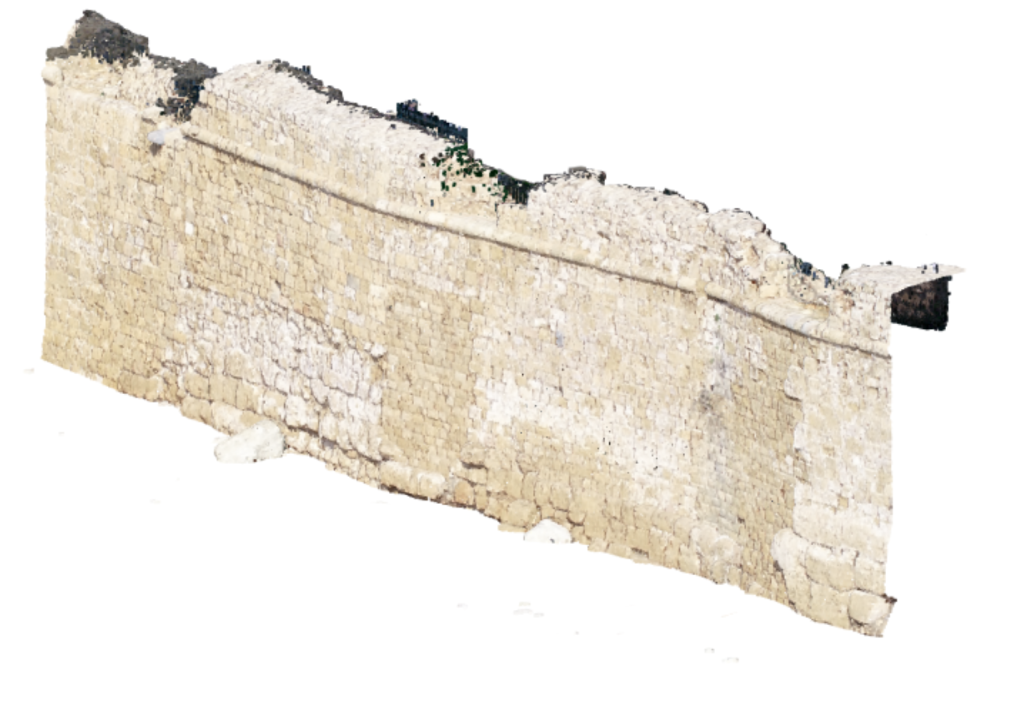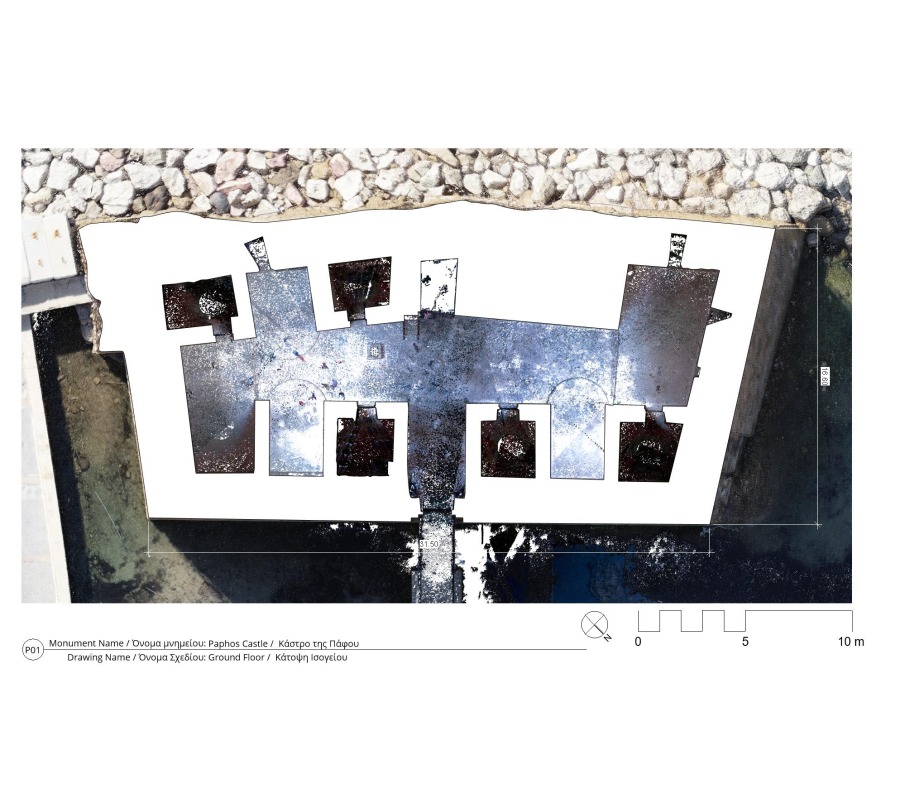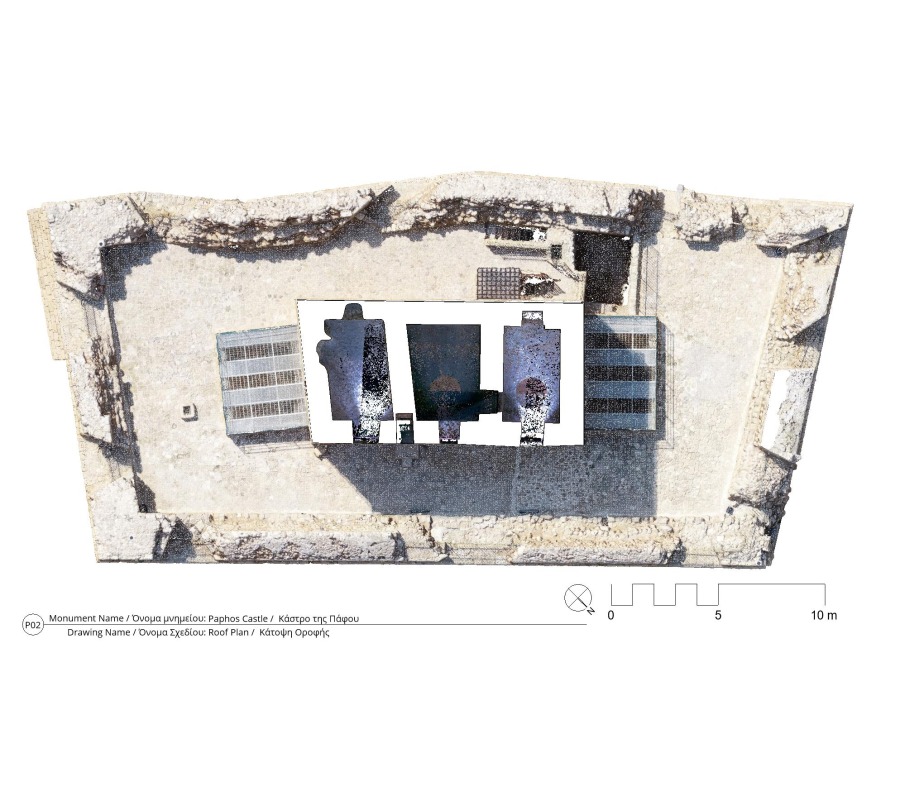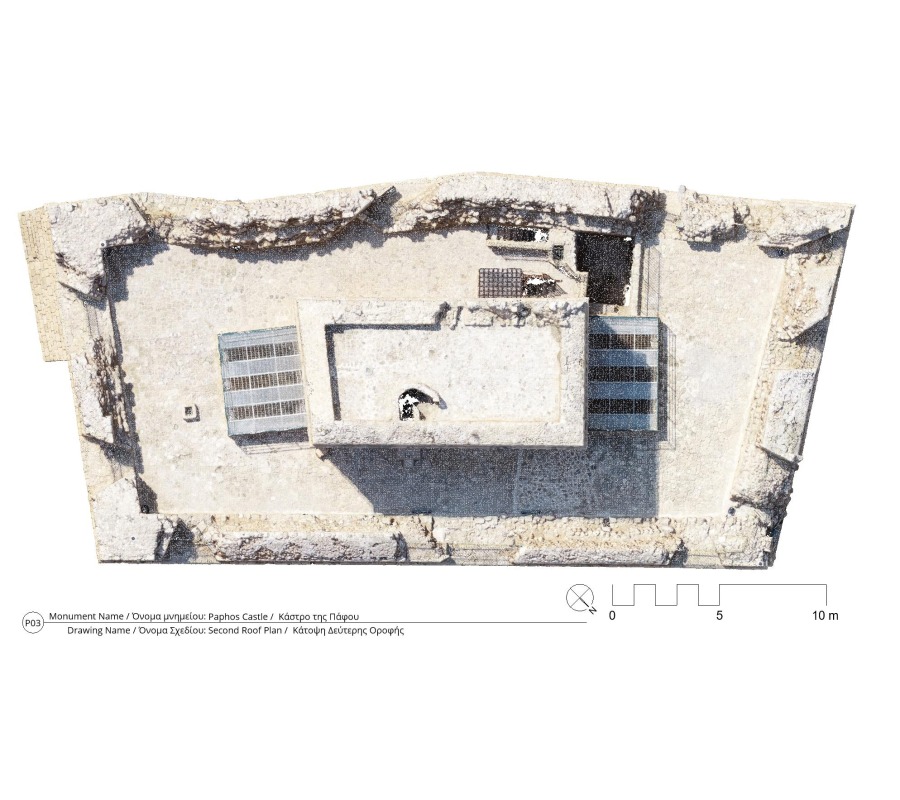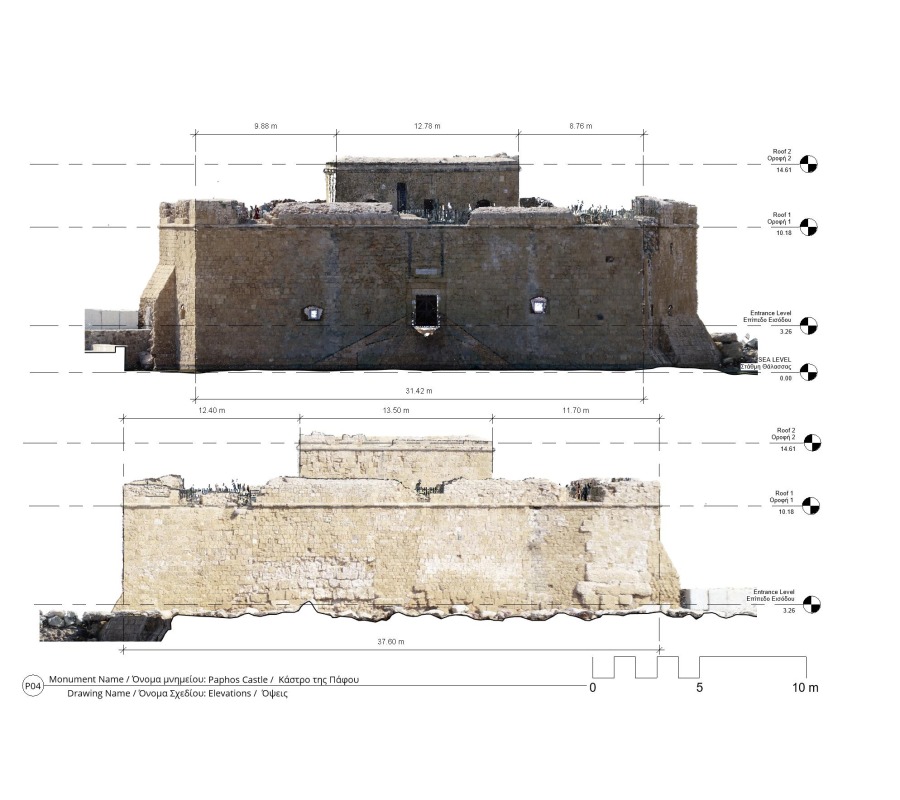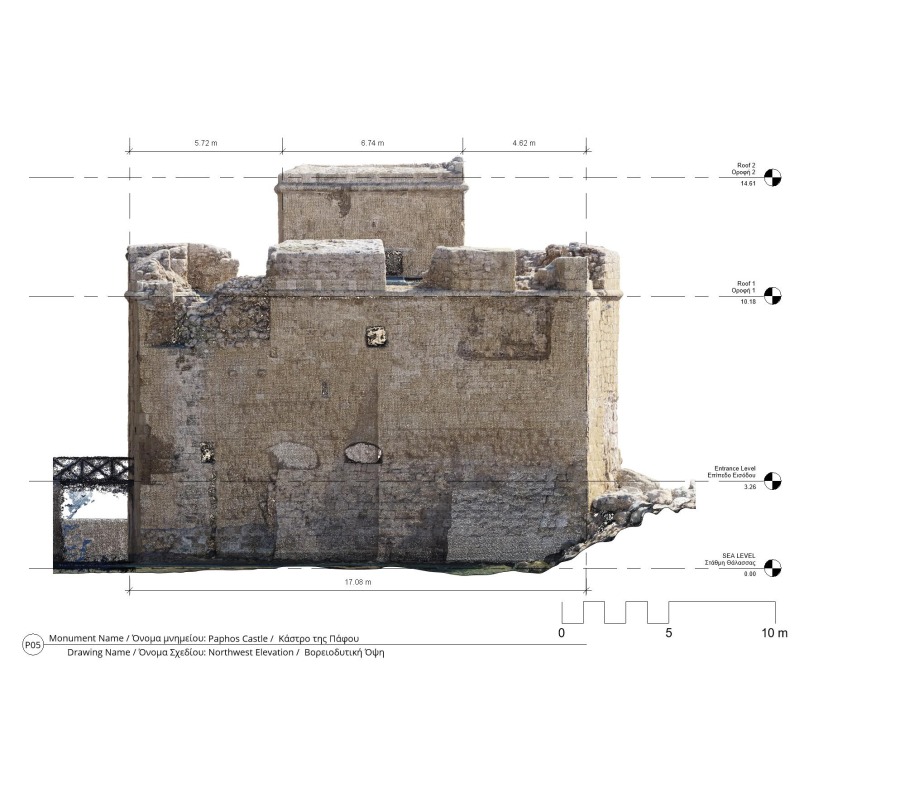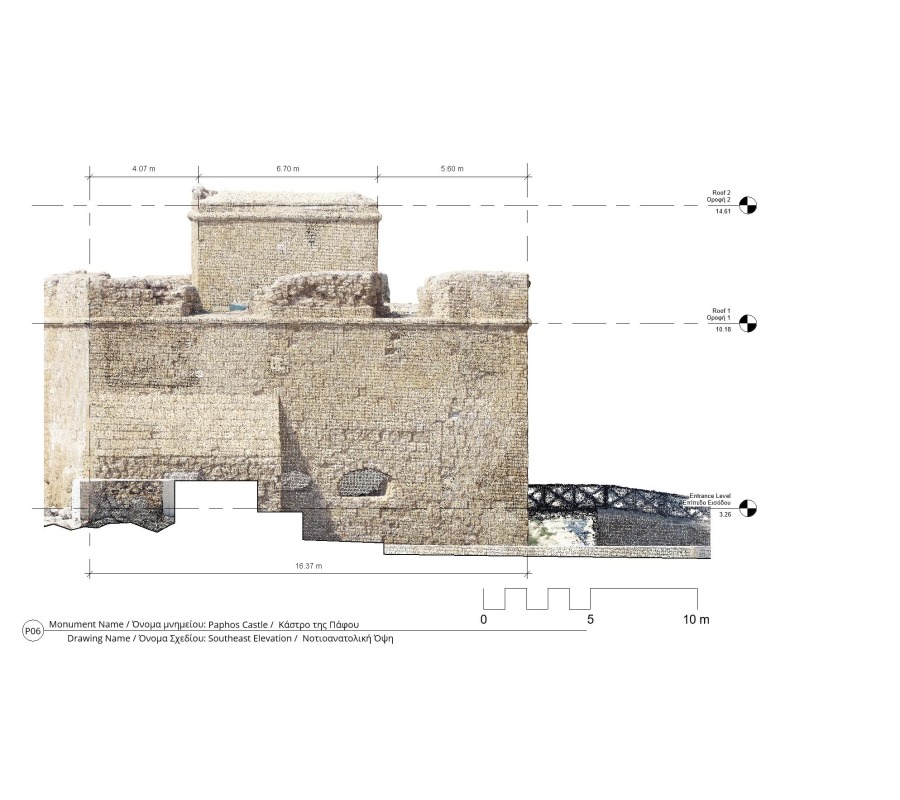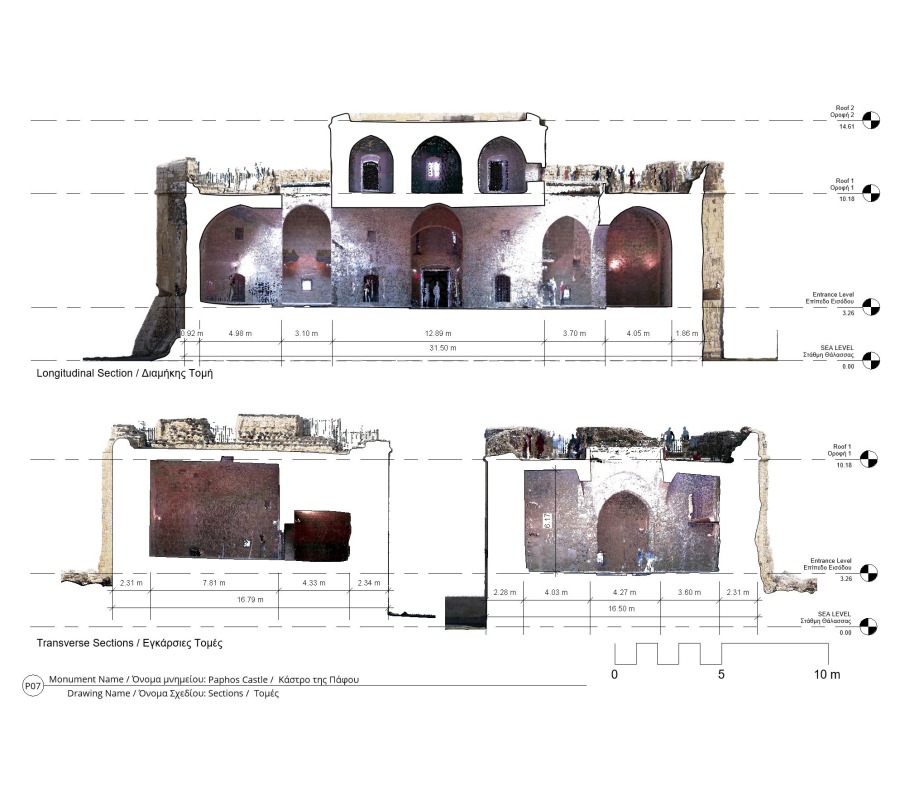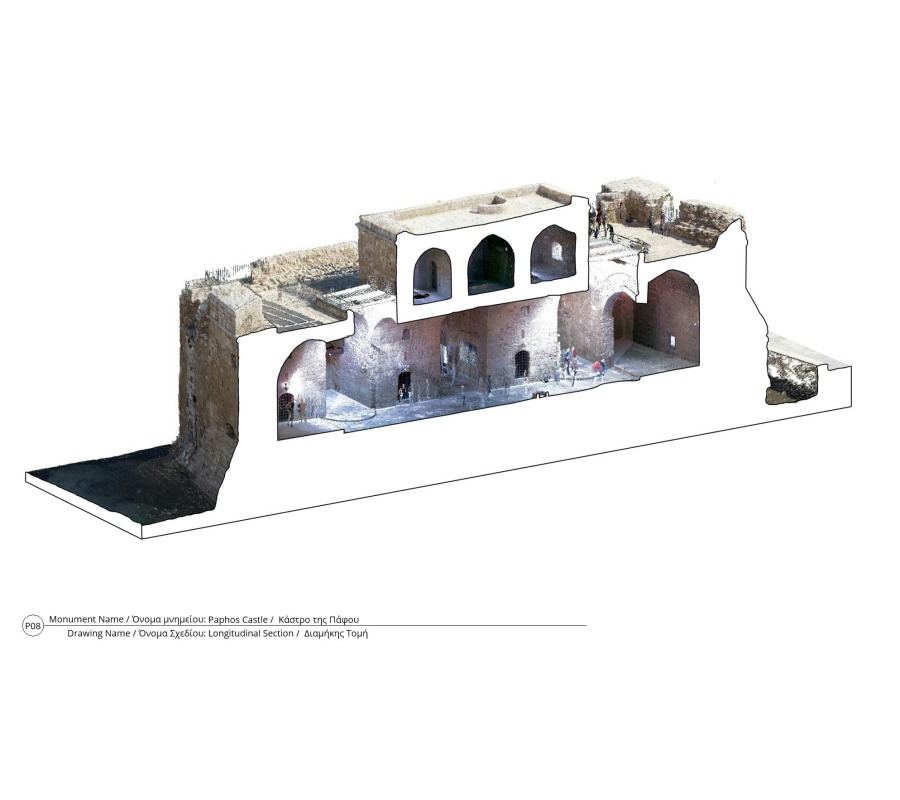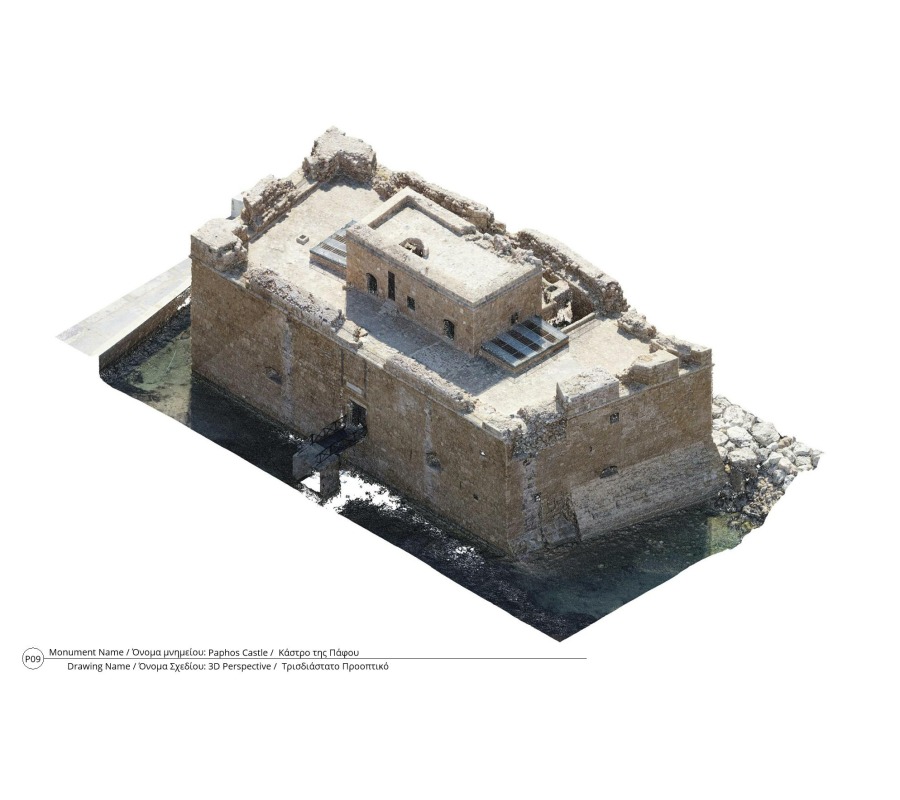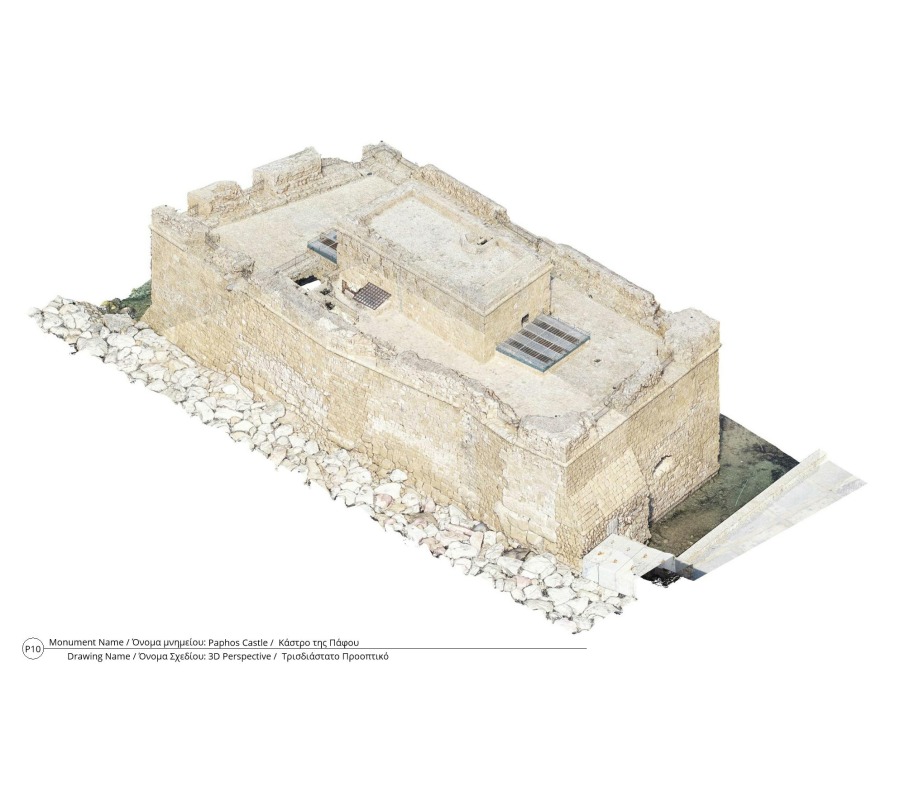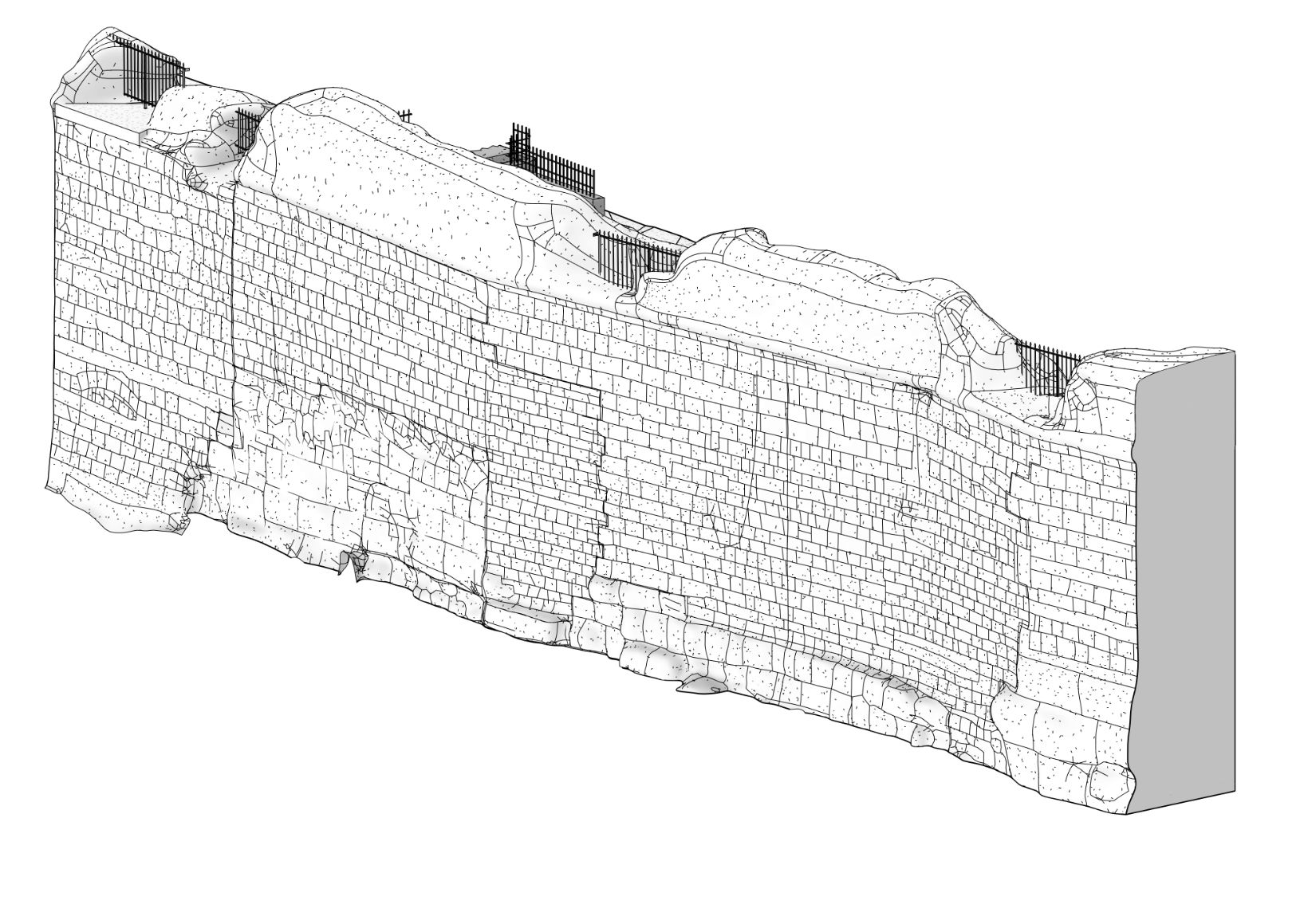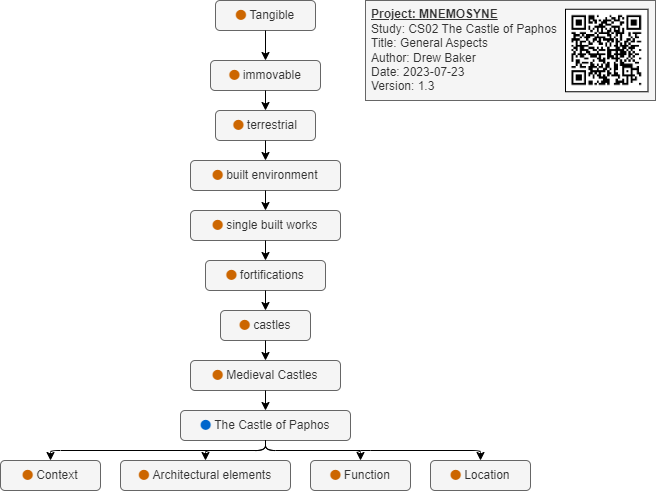1. Introduction
The medieval castle of Paphos, also known as ‘Paphos harbour castle’, is located at the western side of the port of Kato Paphos. The current state of the castle is the result of several reconstructions throughout the years, each representing different periods of the island’s history from the Medieval period onwards (Frankish, Venetian, Ottoman).
The medieval fortress consisted of two towers built in the mid-13th century, when the island was under Frankish Lusignan rule, to replace the nearby fortress known as ‘Saranda Colones’, which was destroyed by an earthquake in 1222 AD. The two towers were connected through a defensive wall and their major function was to control the port’s gateway and protect the city of Paphos by providing defence.
During the Frankish period, Cyprus suffered several raids from the Genoese and the Mamluks. According to Leontios Machairas, the Genoese occupied Paphos in the 14th century -more specifically in 1373. To make the forts stronger, they increased the height of the fortifications, while, at the same time, they opened ditches to be filled with seawater around the two towers.
The Venetians (1474-1571) reinforced Cyprus’ defensive system, mainly in other regions of the island. No significant defensive works took place in the Paphos district. Marino Sanuto and other travellers who visited the island during that period mention two fortresses located at the entrance of Paphos’ port.
The earthquake that took place on the island in 1491 AD must have destroyed one of the two towers located near the sea and thus, it is likely that the eastern port tower was abandoned. In the mid-16th century, the Venetians destroyed the fortress to prevent its use by enemies as fortification against them.
In 1571 AD, when the Ottomans conquered Cyprus, the tower was rebuilt on the ruins of the Frankish fortress, while it was reconstructed in 1592 by the Turkish commander of Cyprus, Ahmet Pasha (1589-1593). The ground floor and the basement of the castle were utilized by the Ottomans as a prison, the central area of the upper floor was used as a mosque, and the rooms for the military garrison lodging.
The British annexation of Cyprus, in 1878 AD, converted the monument into a colonial government salt store. Thus, the castle was not used for defensive or military purposes during that period.
In 1935, the Castle of Paphos was declared an Ancient Monument, with the Department of Antiquities of Cyprus being responsible for its conservation, preservation, restoration, and maintenance. Thus, throughout the years, the castle underwent various restoration and renovation works, for which the Department of Antiquities holds detailed reports and documentation (documents, photographs, etc).
Furthermore, in 1980, the monument was included in the UNESCO World Heritage List.
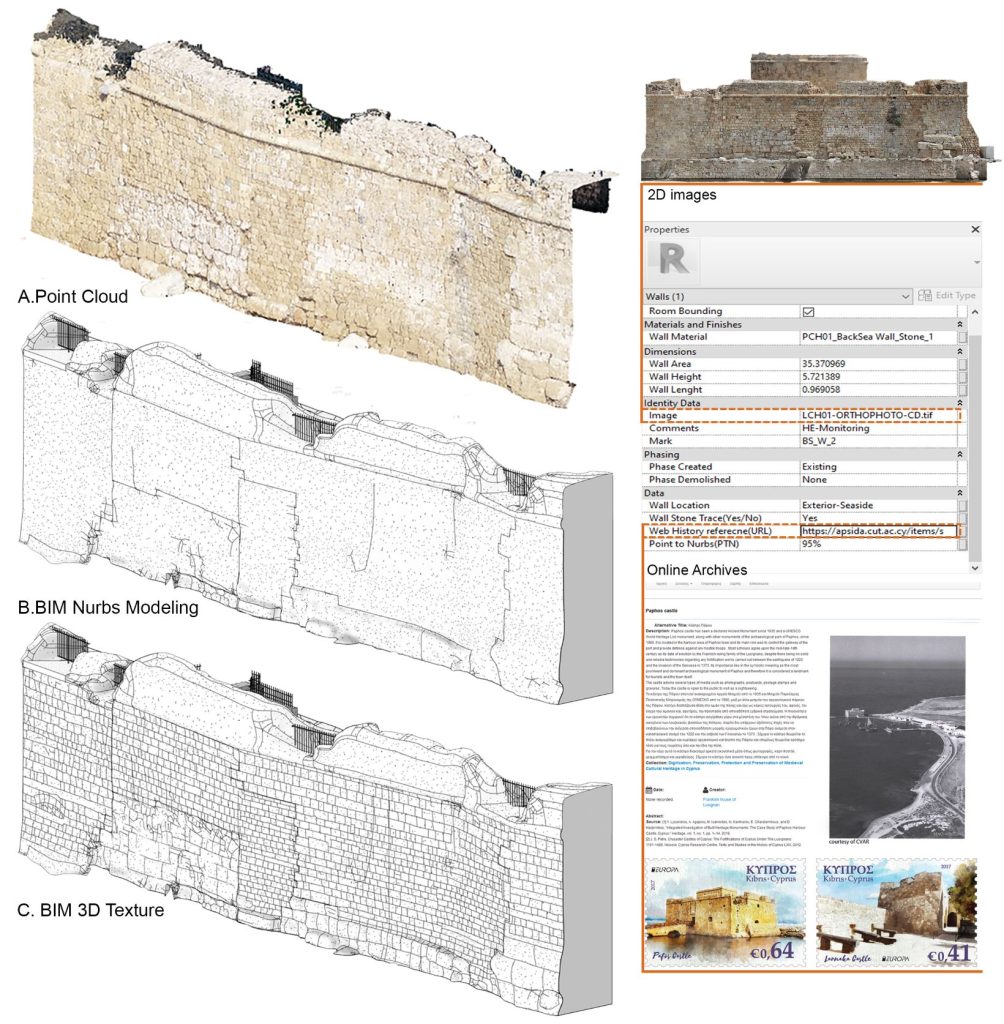
History and restorations
The castle in its present form is the result of various reconstructions over the years, each representing the most important phases of the island’s history from the Medieval period onwards (Frankish, Venetian, Ottoman). Thus, when the Genoese occupied the fortresses of Paphos, they opened ditches for having them filled with seawater. The Venetians reinforced the fortifications of Cyprus but they did not carry out any defensive works in the district of Paphos.
The earthquake of 1491, as well as the abandonment of the Paphos port, led to the destruction of one of the two towers. In the mid-sixteenth century, the Venetians destroyed also the other tower to prevent its conquest by their enemies. After the conquest of the island by the Ottomans, the tower was rebuilt in 1592 by the commander of Cyprus Ahmet Pasha. During the Ottoman period, the castle was used as a prison and as a military garrison accommodation. During the period of the British colonisation of Cyprus, the monument was not used anymore for defensive or military purposes but as salt storage.
The history of the Paphos castle covers also the different restoration works. In fact, throughout the years it underwent various restoration works, for which the Department of Antiquities holds detailed reports and documentation (documents, photographs etc.)
DHRLab has already been a pioneer in the study and documentation of Paphos castle, so it already possesses the authorisation to start immediately working on it. In the context of the project DigiArc (Interreg VA Greece-Cyprus 2014-2020), the members of DHRLab have already collected various datasets, which have been made available to ERA Chair team members to be used, exploited and further processed.
3. Estimation of Complexity & Quality
The following radial charts are base on the based on the EU 3D Study/VIGIE 2020/654

6. Research Output
Videos
7. Bibliography
- A. Aristeidou, Pafos Castle: With a Short History of the Town and Its Fortifications
- C. Corvisier, Le Chateau de Pafos, in La Art gothique en Chypre, 2006.
- V. Lysandrou, A. Agapiou, M. Ioannides, N. Kantiranis, E. Charalambous, and D. Hadjimitsis, “Integrated Investigation of Built Heritage Monuments: The Case Study of Paphos Harbour Castle, Cyprus, Heritage, vol. 1, no. 1, pp. 1 , Mar. 2018, doi: 10.3390/heritage1010001.
- J. S. Petre, Crusader castles of Cyprus : the fortifications of Cyprus under the Lusignans :1191-1489, PQDT UK Irel., p. 432, 2010.
- R. C. Severis, Monuments and Memories, Castles and Forts of Cyprus. 2011.


